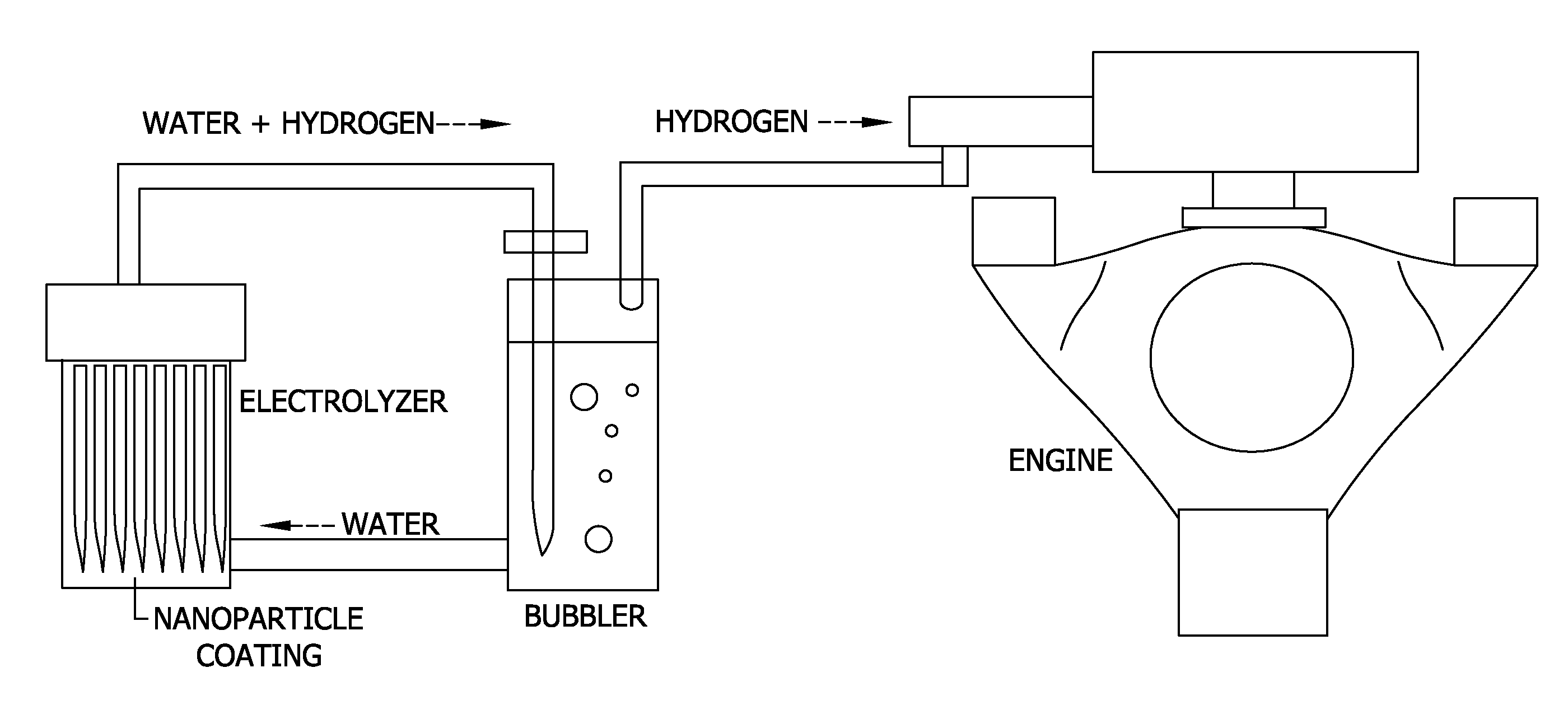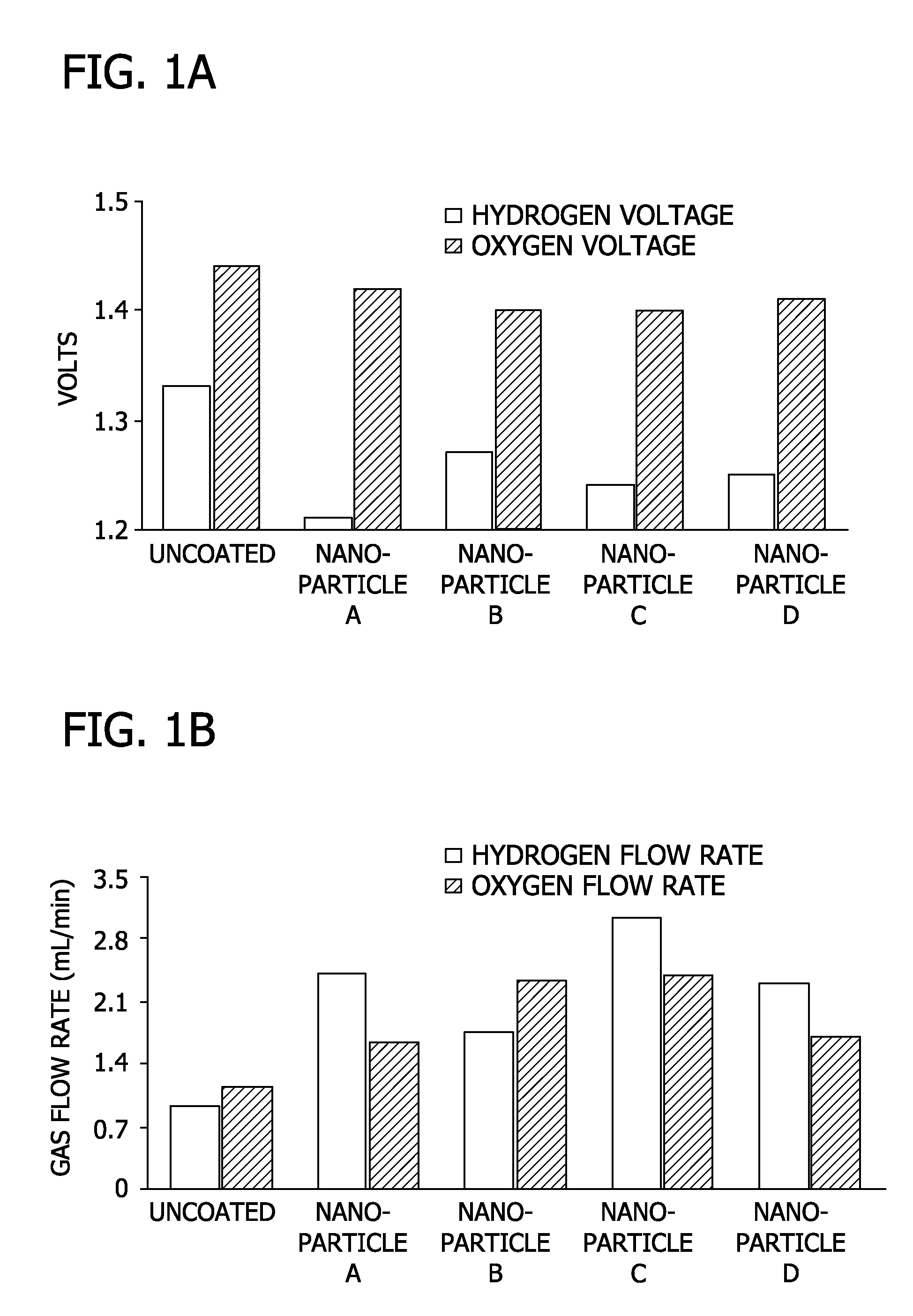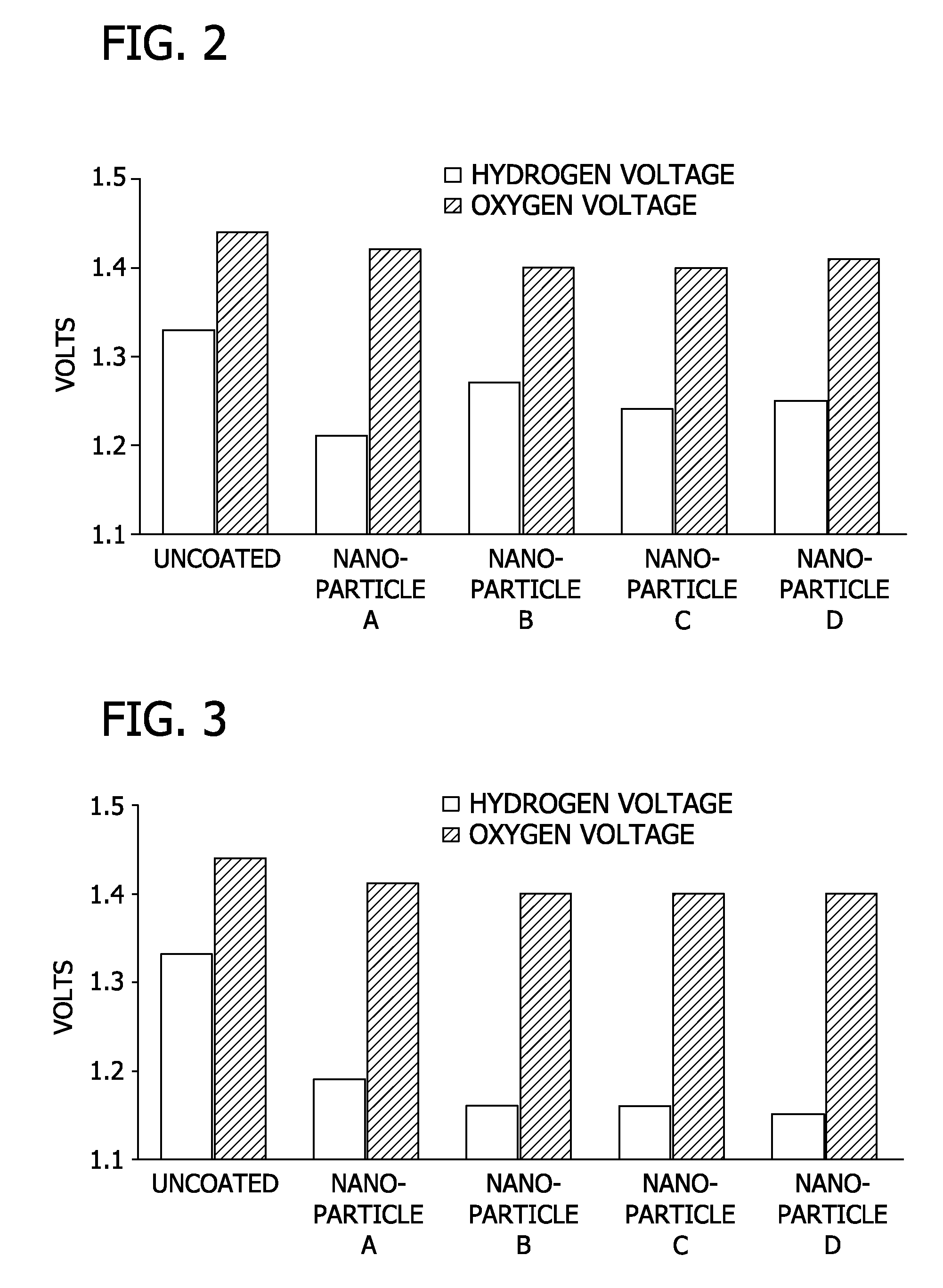Nanoporous materials for reducing the overpotential of creating hydrogen by water electrolysis
a technology of nanoporous materials and water electrolysis, applied in the field of electrolysis, can solve the problem that the actual potential required to split water is greater than the thermodynamic potential, and achieve the effect of reducing the overpotential required
- Summary
- Abstract
- Description
- Claims
- Application Information
AI Technical Summary
Benefits of technology
Problems solved by technology
Method used
Image
Examples
example 1
[0073]In this Example, the voltage required to produce hydrogen and oxygen by water hydrolysis using electrolyzers with electrodes including nanoporous oxide coatings was tested. The amount of hydrogen and oxygen produced was also measured.
[0074]The electrolyzer was operated using a multichannel potentiostat (an instrument that can accurately measure and source voltages and currents) to monitor the current and voltage between all the electrodes.
[0075]Suspensions of nanoporous oxides were prepared by mixing metal alkoxides with water in either acidic or basic conditions to produce suspension of aluminum oxide, silicon dioxide, titanium oxide, and zirconium oxide in water. Electrodes were then prepared by coating a 2″×2″ stainless steel coupon with one layer of the nanoporous oxide coating solutions by a dip coating technique where the coupon was withdrawn from the suspension at a controlled velocity. The coated electrode samples (i.e., coupons) were then fired at a scintering tempera...
example 2
[0078]In this Example, the effect of varying the number of nanoporous oxide coatings and the sintering temperature on overpotential was evaluated.
[0079]Stainless steel coupons (2″×2″) were coated with either 1 or 3 layers of nanoporous oxide coating at sintering temperatures of either 350° C. or 450° C. A three electrode configuration with a platinum counter electrode and linear sweep voltammetry was used, as previously described. The electrolyte-containing aqueous solution used in the Example was 1M Na2SO4 at pH 6.8.
[0080]FIG. 2 shows the voltage required (relative to a saturated calomel reference) to produce both hydrogen and oxygen for electrodes with 1 layer of coating fired at a sintering temperature of 350° C. FIG. 3 shows the voltage required (relative to a saturated calomel reference) to produce both hydrogen and oxygen for electrodes with 3 layers of coating fired at a sintering temperature of 350° C. FIG. 4 shows the voltage required (relative to a saturated calomel refere...
example 3
[0083]In this Example, voltage between unconnected electrodes was measured to determine if reactions were occurring on the electrodes not connected to the power source. In the standard configuration, only 5 of the 21 electrodes in the electrolyzer were connected to a power source, as illustrated in FIG. 10.
[0084]In this Example, the voltage and currents were measured using a multichannel potentiostat to determine how the voltage and currents are distributed between electrodes of an electrolyzer. One channel of the multichannel potentiostat was used to source the electrical energy to the electrolyzer and four other channels were used to measure the voltage across the connected channel. A set voltage of 11 V remained constant throughout the Example.
[0085]As shown in FIG. 11, measurements of the voltage difference between plates 1 and 2, and plates 1 and 5 were obtained even though plates 2 and 5 were not connected to the power source. The voltage increased stepwise, which is analogous...
PUM
| Property | Measurement | Unit |
|---|---|---|
| pore diameter | aaaaa | aaaaa |
| thickness | aaaaa | aaaaa |
| temperature | aaaaa | aaaaa |
Abstract
Description
Claims
Application Information
 Login to View More
Login to View More - R&D
- Intellectual Property
- Life Sciences
- Materials
- Tech Scout
- Unparalleled Data Quality
- Higher Quality Content
- 60% Fewer Hallucinations
Browse by: Latest US Patents, China's latest patents, Technical Efficacy Thesaurus, Application Domain, Technology Topic, Popular Technical Reports.
© 2025 PatSnap. All rights reserved.Legal|Privacy policy|Modern Slavery Act Transparency Statement|Sitemap|About US| Contact US: help@patsnap.com



